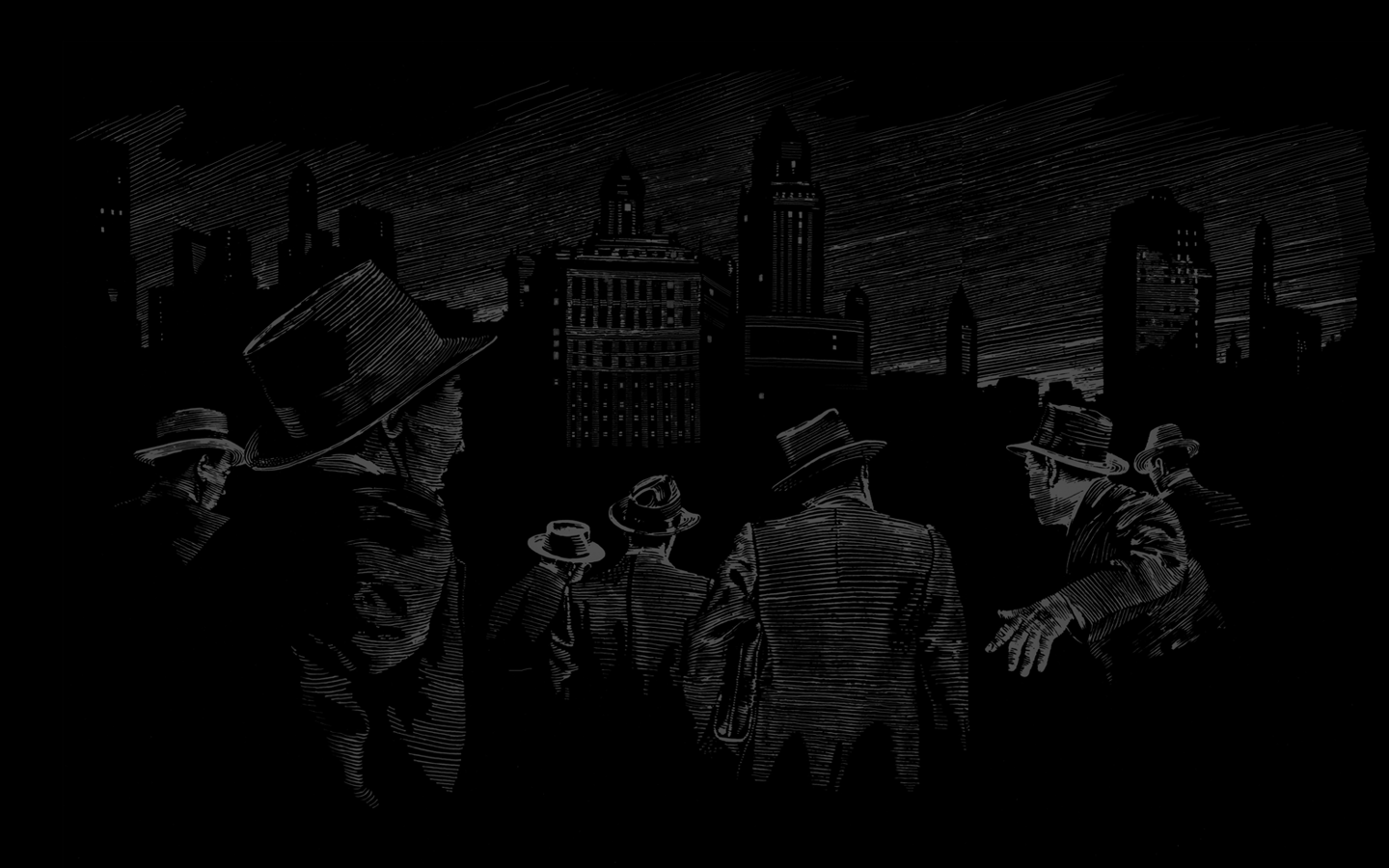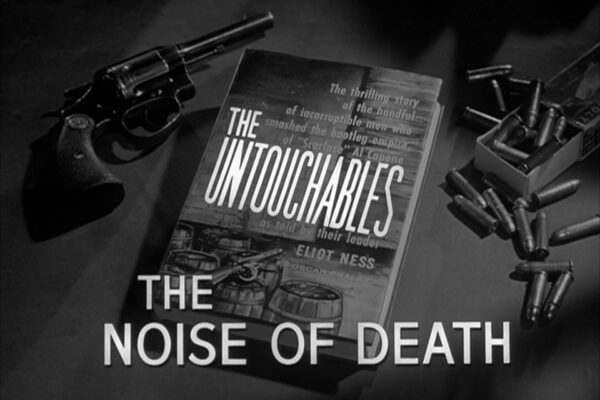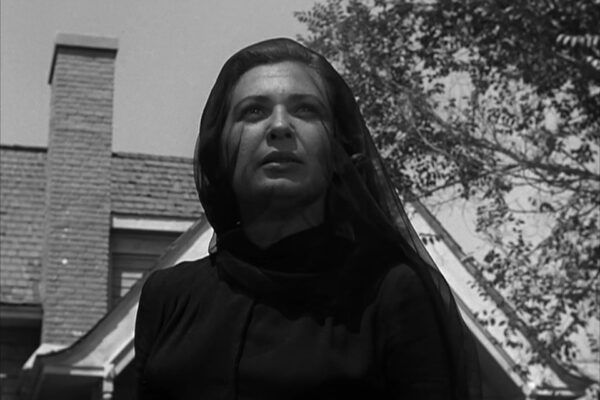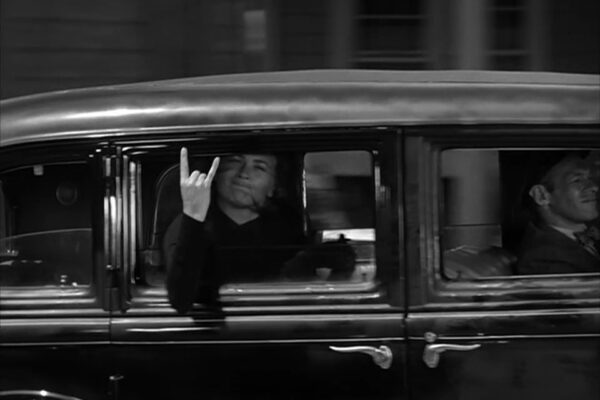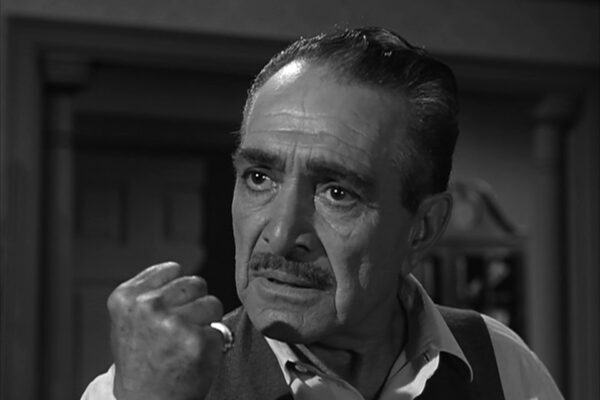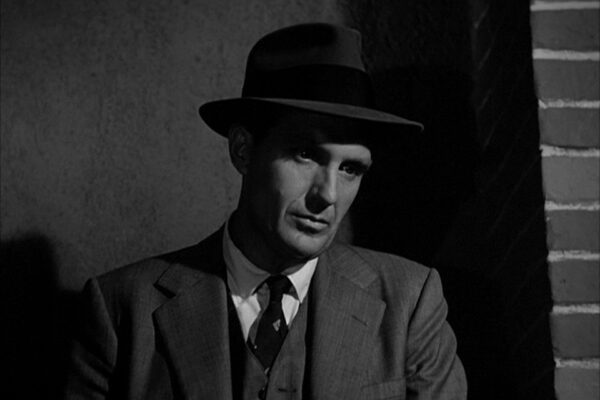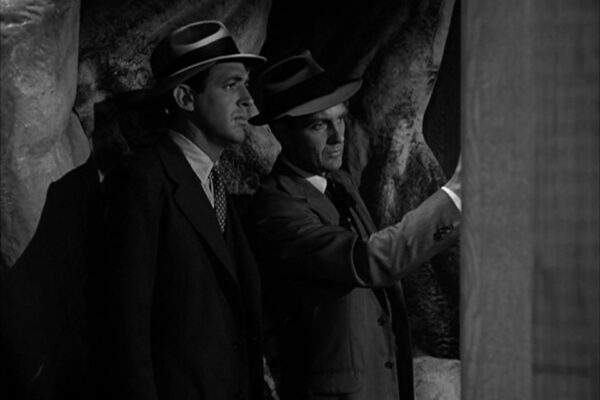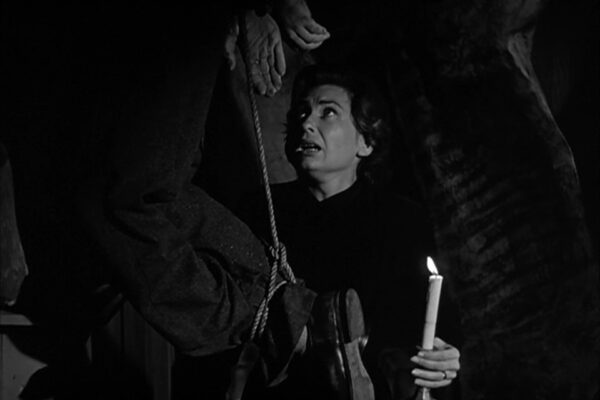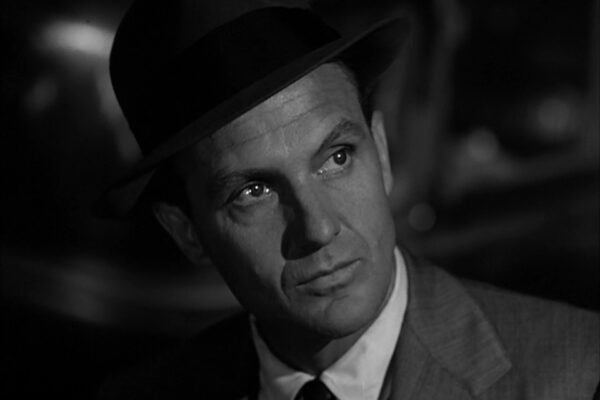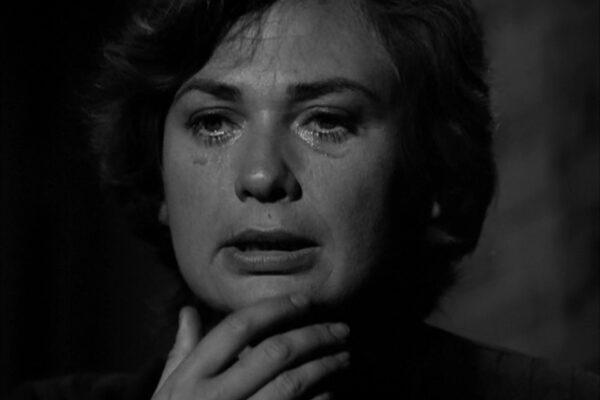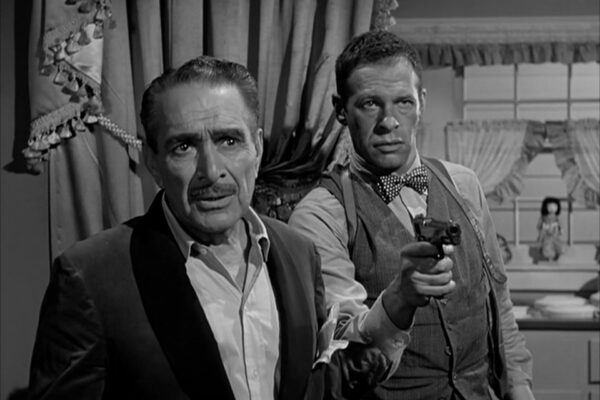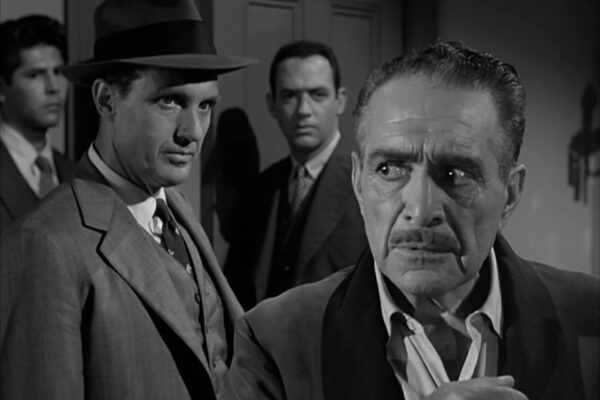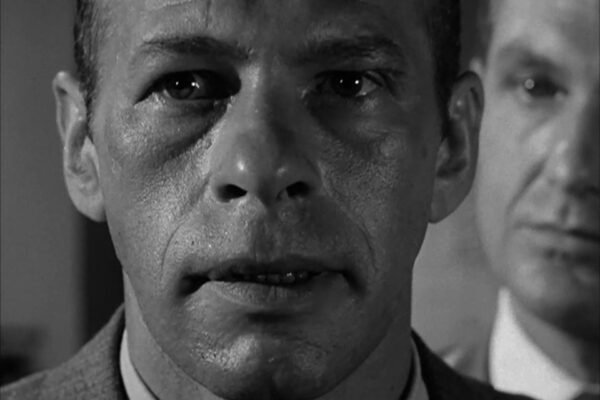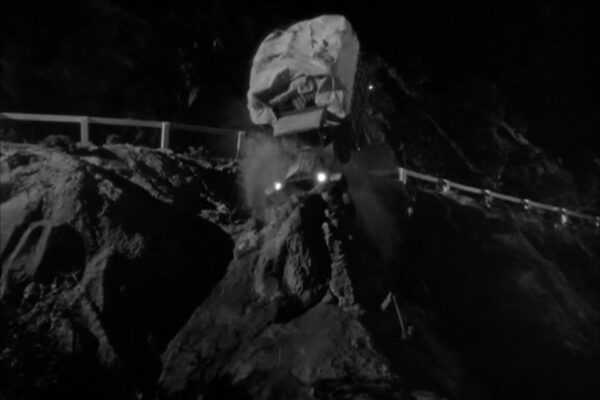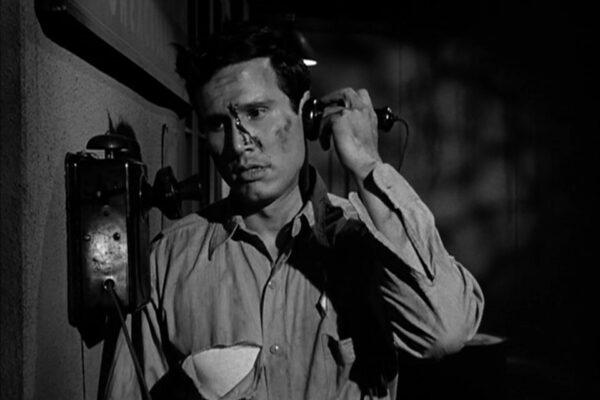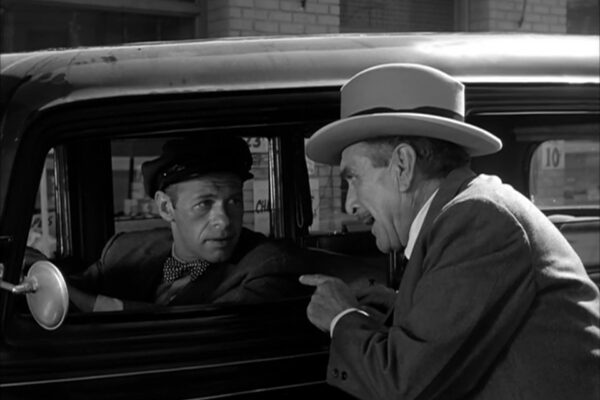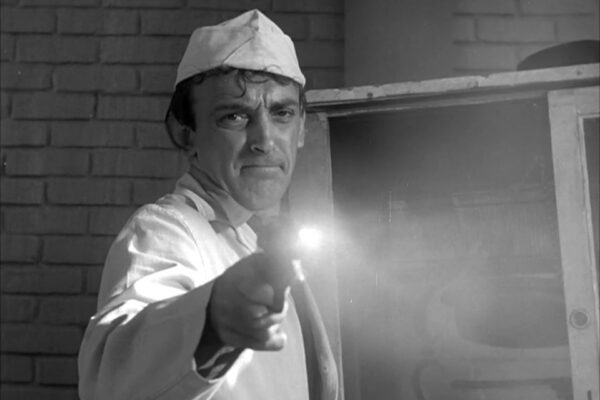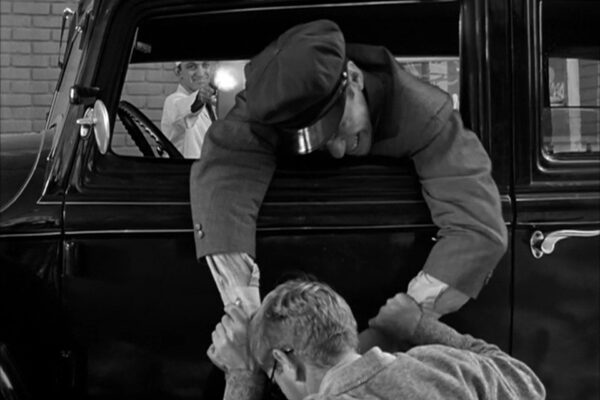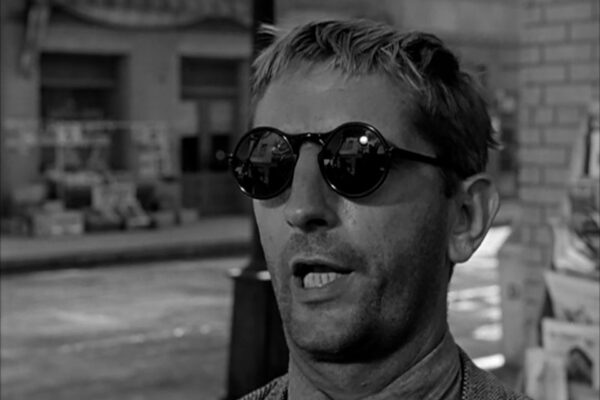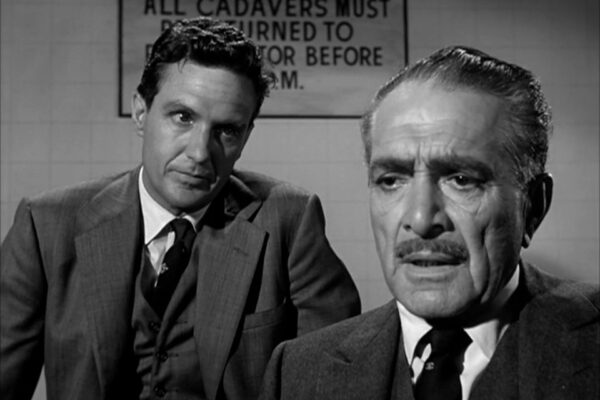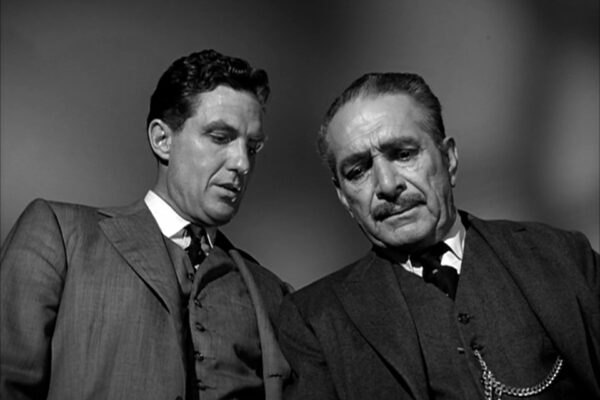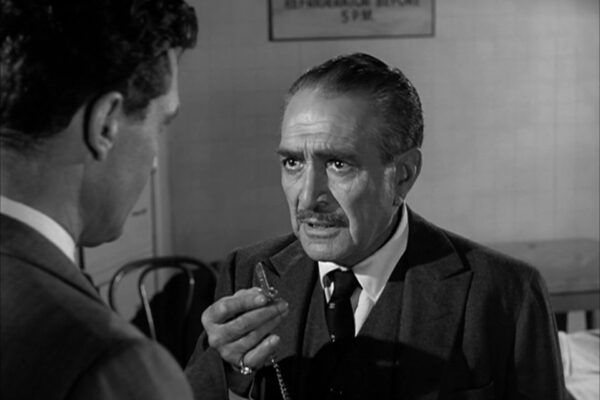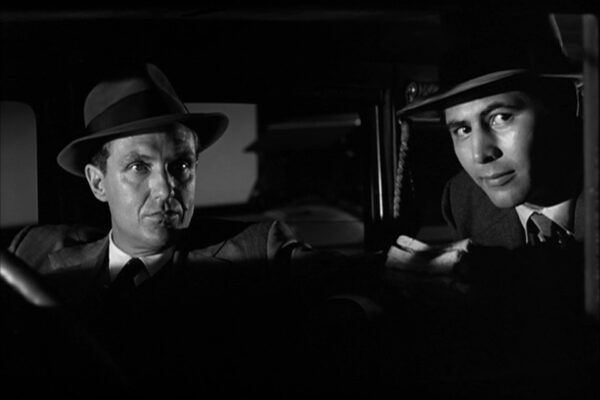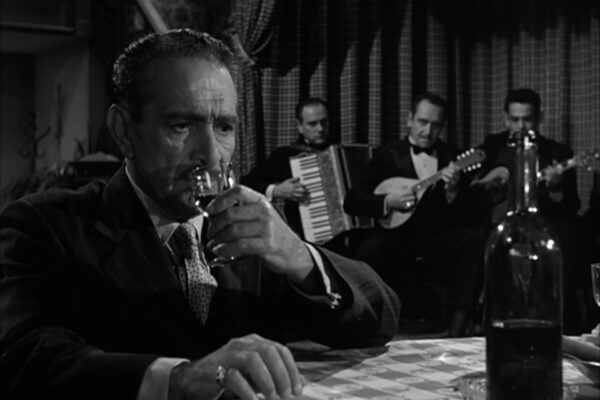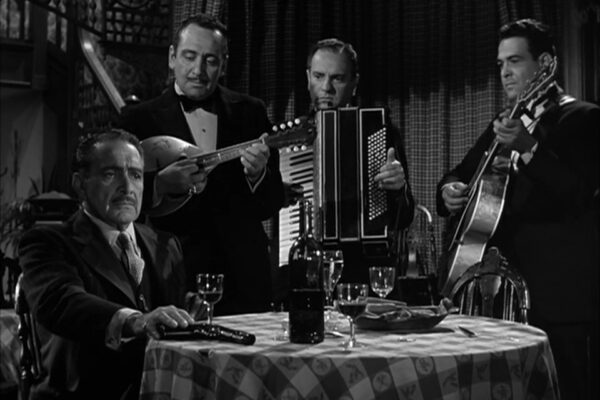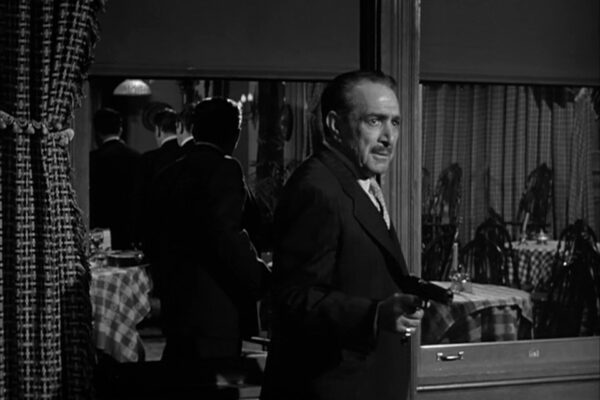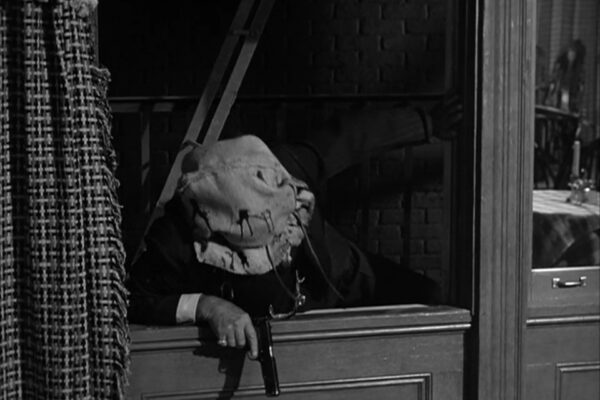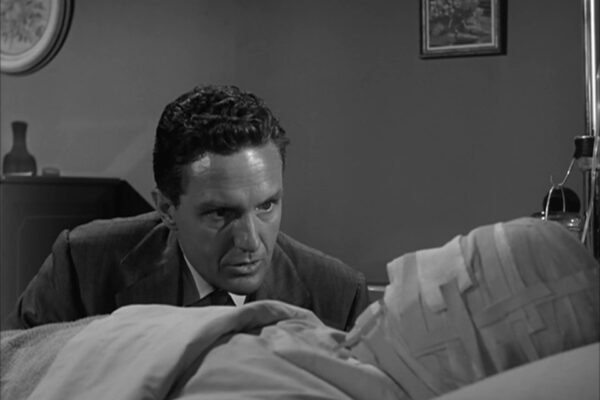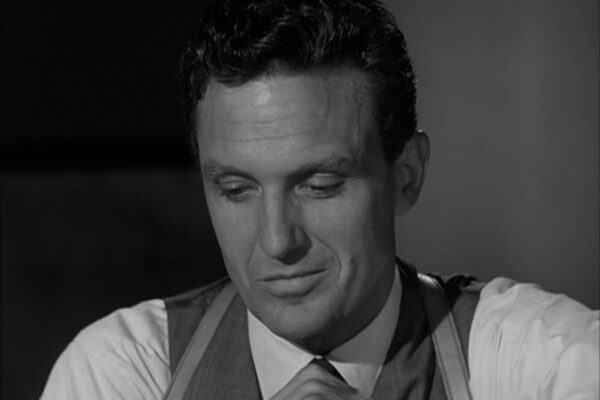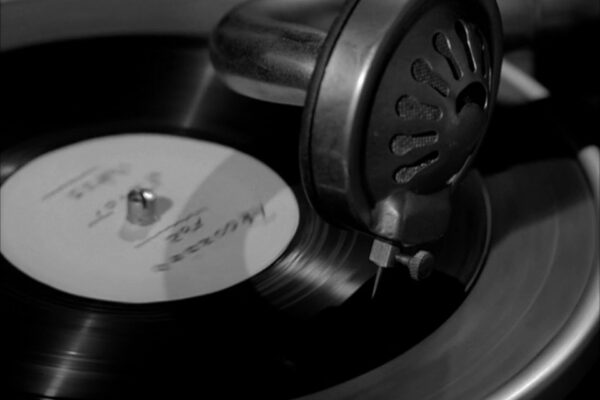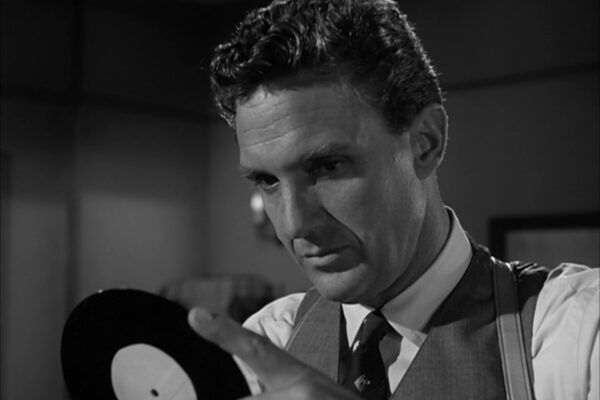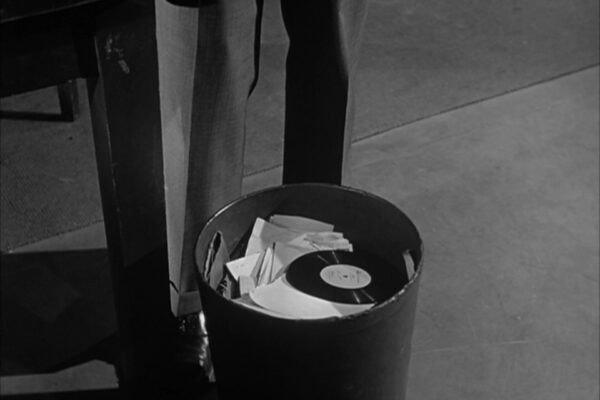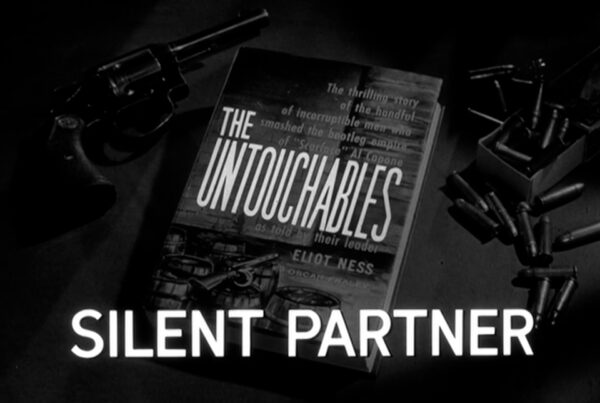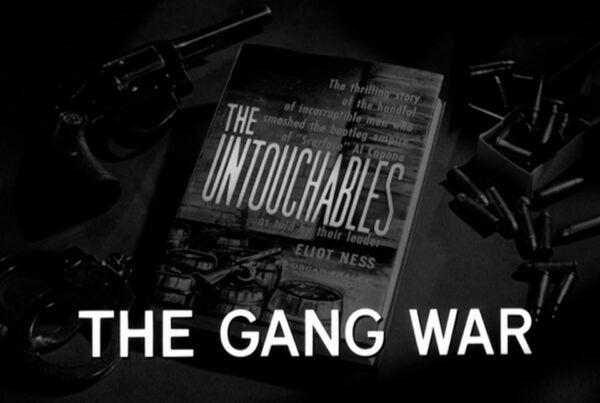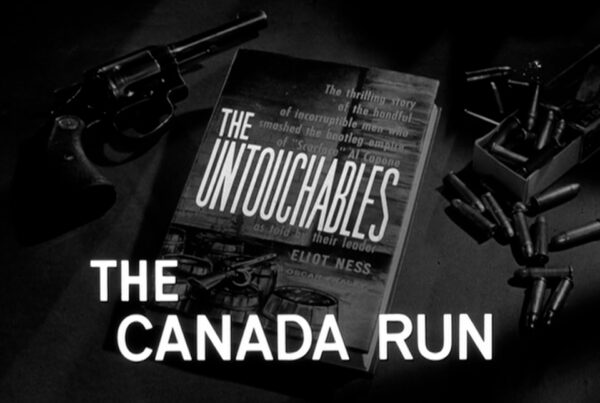THE NOISE OF DEATH
Airdate: Original Air Date: January, 14th, 1960 (Originally Scheduled October 22nd, 1959)
Written by Ben Maddow
Directed by Walter E. Grauman
Produced by Charles Russell
Director of Photography Charles Straumer
Co-starring Henry Silva, Norma Crane, J. Carrol Naish.
Featuring Mike Kellin, Rita Lynn, Karen docker, Joi Lansing, Harry Dean Stanton
“A nice day in Chicago, March 31, 1933. At No. 1229 Houser Boulevard lived Joseph H. Bucco, his wife and daughter. Everybody knew Joe Bucco and liked him.”
Fifty-one year old Joseph Bucco (J. Carroll Naish), a middle level Mafia consigliore, isn’t ready for retirement, but the organization is ready to replace him with the much younger Little Charlie Sabastino (Henry Silva), and a power struggle ensues while Ness observes, unable to intervene. Convinced that Bucco may expose the rackets rather than face death, Ness keeps track of his movements. Eventually, Bucco dangles a key, suggesting that when he is dead, it will unlock the mysteries.
Following Bucco’s assassination, Ness discovers that the key leads to a safe deposit box where he finds a small recording, but instead of names, dates and transactions, Bucco sings a few bars of a mock Italian opera and casts a warning of his own for Ness to “get out of the gumshoe business…or some people like me will get crazy and kill you.”
“Eliot Ness had no pity for the death of a monster, only the man entangled inside of him. For Eliot Ness, the Joe Bucco case was ended, but the fight against the Mafia only beginning.”
REVIEW
The Noise of Death is an engaging, enigmatic hour filled with restrained flourishes and depth, from Mike Kellin’s brief role as a punch-drunk, dim-witted chauffeur and bodyguard; Henry Silva’s cold, unnmoving Little Charlie; the grandfatherly demeanor J. Carrol Naish’s monstrous George Bucco; and the suspicion that we are getting an authentic, behind-the-scenes glimpse at the inner-workings of a criminal organization years before The Godfather would strike the public consciousness. For the duration of the episode, George Bucco is our Vito Corleone.
Despite Winchell’s admonition to the contrary, this will be the only episode to deal directly with the Mafia or use the name in the storyline. The central theme in this installment, one of Bob Stack’s admitted favorites, is omerta, the code of silence that members once adhered to even in the face of death.
Director Walter Grauman notes that Ben Maddow put this piece together on the basis of a true story involving a Mafia don (known as a “Mustache Pete”), who annoyed New York mobster Lucky Luciano by not retiring in a quiet and timely manner. Maddow’s teleplay follows the legend almost step by step, ending, of course, with the principal character’s ceremonious dispatch following dinner, some fine wine, and a little music.
Easily the most horrific moment comes early on when Ness breaks into a restaurant with a warrant to search for liquor and finds not only that but the recently missing restaurateur, Arturo Vittorini, in the meat locker, strung up like a brisket. Vittorini had failed to subscribe to a newly offered garbage collection service headed up by Little Charlie, lately anointed Bucco’s successor. Bucco refuses to go quietly and attacks Little Charlie’s interests, one of which is a fully loaded truck shown crashing off a cliff.
That is followed immediately by the demise of Bucco’s chauffeur, Abe Garfinkle (Mike Kellin), with six shots to the back of the neck in a Mafia signature warning that Bucco, should he fail to step down, is next. (It was later reported that during the sponsor’s screening of this episode, a client horrified by the meat locker murder decided to withdraw his spot.)
Series producer Alan Armer remarked that he remembered this episode, filmed before his association with the program, as having been “one of our more violent shows. Then I showed it to a film class I was teaching and it wasn’t nearly as bad as I remembered it. We’ve obviously grown quite accustomed to much worse in terms of violence.”
The episode’s climactic scenes represent a degree of cinematic metamorphosis for The Untouchables. Noted television and film historian Stephen Bowie says it best in his outstanding review:
“[The Noise of Death] is the seminal, turning-point episode of The Untouchables that blueprinted the series’ transformation from a simplistic cops-and-robbers shoot-’em-up into a richer, more character-driven melodrama.”
Two stand-out scenes from the climax perfectly encapsulate this line of creative demarcation for the series. The first is the murder of Joe Bucco, who is lured into his own ritualistic assassination. While Bucco is defiant, even Walter Winchell knows the score: “And the time had come, always after dinner, with good food, good wine, and good company, when a stranger would come up from behind him and he would hear like all the guns in the world shot off together, the terrible, short noise of death.”
This scene encapsulates a dark and beguiling strangeness which promises to edge the series beyond outside the confines of the television medium into something far more vivid.
The ending scene continues this through-line, as Eliot Ness finally secures the key to Bucco’s safety deposit box, where he has promised Ness a gift for when Bucco is gone.
The decision to have Eliot Ness lose – and to pit his battle against the underworld as defeatist (if not potentially hopeless) – is one of the starkest endings the show will ever feature. Suddenly and dramatically, this expensive little program is experimenting as much with history as it is flirting with art, pathos and ethos. As Bowie notes, the cerebral Noise of Death was something special and everybody knew it.
The choice to have Ness lose (and lose early in the series) is also a brave one and Maddow will return to hand Ness another mixed bag resolution in the almost-as-strange Head of Fire, Feet of Clay later in the First Season. Maddow’s two contributions to the canon delight in seeing what happens when antagonists wield their narrative hatchets against the typically unflappable Ness, a device employed more readily in ensuing seasons. Bucco insults Ness’ shoes, his income, and his honesty, and he does it so well, so charmingly, that even when Bucco insults his singing voice, Eliot Ness can’t help but crack the slightest, most reticent of smirks.
The Noise of Death does have several weak moments, but overall, it is among the best programs and a lasting tribute to its creators. In a way, the delayed airing of the episode (for reasons recounted here in our review of The Underground Railway) is a both a blessing, curse and shot of epinephrine for the series. Had it aired as the third episode as originally intended, it would have also closely trailed the blowback from the FBI and Ma Barker. Likewise, the swift attention from the real Mafia could have immediately softened ensuing episodes and sent the writers into hiding.
Speaking of the Mafia…
There’s No Such Thing as The Mafia
To say the very least, the real Mafia was neither amused nor entertained by The Noise Of Death. It pleased them greatly to hear hamstrung law enforcement officials at the federal level suggest, say, on Wednesday, that there was no such thing as the Mafia, only to turn to their TV sets on Thursday to find their rituals, customs and next of kin dramatized with painful accuracy.
For over three decades, beginning during prohibition, the nation’s FBI chief, J. Edgar Hoover, had maintained that there was no such thing as a Mafia or any other nationwide criminal organization. It is said that the Mafia pranced up and bit the old bulldog on the paw the morning of November 16th, 1957, when newspapers carried the story of the so‑called Apalachin Affair, wherein Mafia leaders from around the world gathered in New York the day before at the secluded home of Joseph Barbara Sr., known to locals and the FBI as a wealthy, but otherwise unremarkable distributor of soft drinks, principally Canada Dry.
Until this episode, the series had only begun to annoy ordinary Italian-American viewers, but now it was becoming quite personal with all the wrong people. After this episode aired, the threats began. Some were made against the studio, others leveled directly against Desi Arnaz, threatening to “blow his brains out if he didn’t get them off the show.”
Wisely, Arnaz made it a matter of policy to leave the Mafia alone after this installment, and with over 100 programs yet to be filmed, it was never approached again. Not only were writers instructed to forget the name, but everything that might be even remotely associated with the Mafia. The Sicilian word omerta is never uttered again and there would be no more so‑called ritual murders of any kind like the meat locker affair, most other variations on the theme too grisly for television in any case. Even the dum‑dum bullet, once favored by Mafia assassins because of the damage it inflicted and only mentioned once in the Desilu Playhouse, was no longer of any utility for television gangsters. And The Noise Of Death would not be shown on the network again.
But Chicago is as far from Lake Michigan as Italian gangsters are from the Mafia. That one could insult the bride without incurring the wrath of the groom was an oddly naive notion for television’s leading producer.
Arnaz did not fully understand the forces that had gathered against him.
QUOTES
BUCCO: I never saw you. But I know who you are. You were gonna trigger me, weren’t you? I know a million tricks like that. You know what I’m gonna do? I’m gonna throw you to Lake Michigan and let you sink to the bottom. Now turn around all of you! You know what else I’m gonna do? I’m gonna tie an iron bell around your neck. So it’ll ring, when you’re going down. How ya gonna like that?
BUCCO: Get outta the game, Mr. Ness. Quit the gumshoe job or else. People such as me is gonna get crazy and kill you. They gotta. You drive ’em to it. You’re too honest. And that’s bad for business. You’re gonna lose Mr. Ness. You’re gonna lose. And the pity of it is, you ain’t even got a good singing voice, have you Mr. Ness? Whatta you say, eh?
OBSERVATIONS
• The clip of the crashing truck was borrowed from Humphrey Bogart’s 1939 film, They Drive By Night.
• Henry Silva will reprise his role as Little Charlie Sebastino in the Second Season episode The Mark of Cain.
• In addition to Silva, there’s a lot of star power floating around this hour. Norma Crane will light up the concrete as the title character in The Lily Dallas Story in the Second Season whereas Mike Kellin would star in The White Slavers and City Without a Name.
• Ness’ wife is mentioned twice, which may have been motivated by how soon this storyline would have followed the premiere episode.
HISTORICAL NOTES
• The Mafia, or Black Hand Society, was brought to America in 1899 by Ignazio Saietta, alternately known as Lupo The Wolf, probably for a talent similar to that of being able to bring down fair sized game and eat it uncooked. Open only to Sicilians and requiring a mixed blood initiation ritual, usually of the slashed wrist variety, not even Al Capone was eligible to head up the Chicago Mafia. This did not prevent him from controlling it as something of a personal weapon through a succession of leaders.


